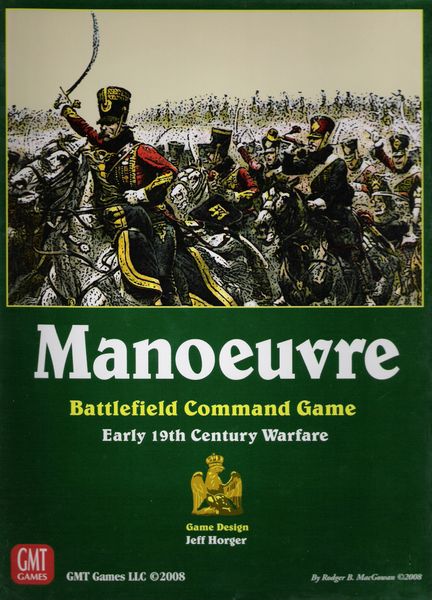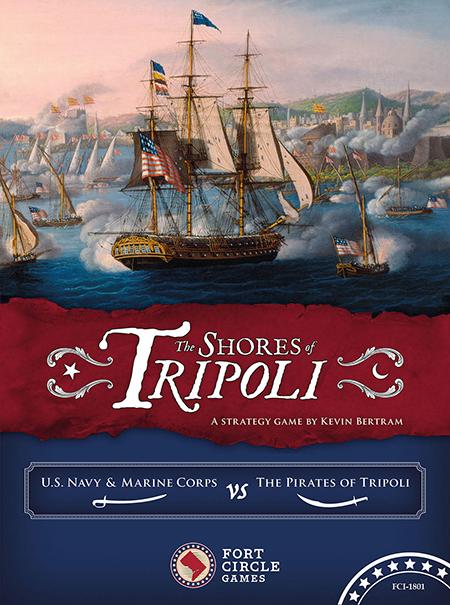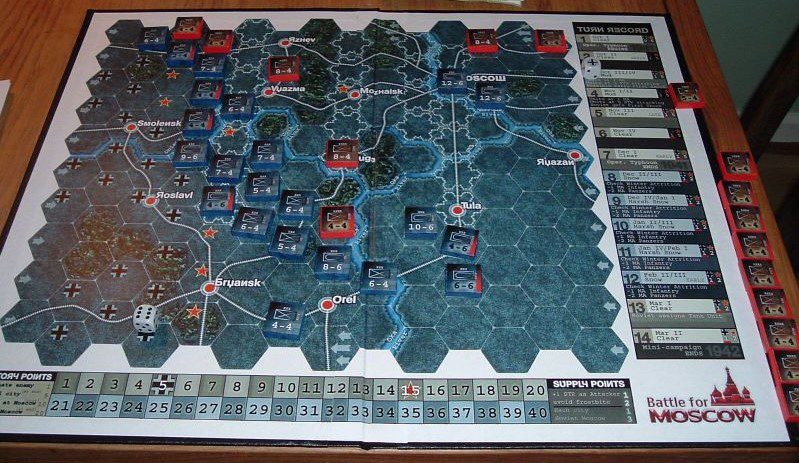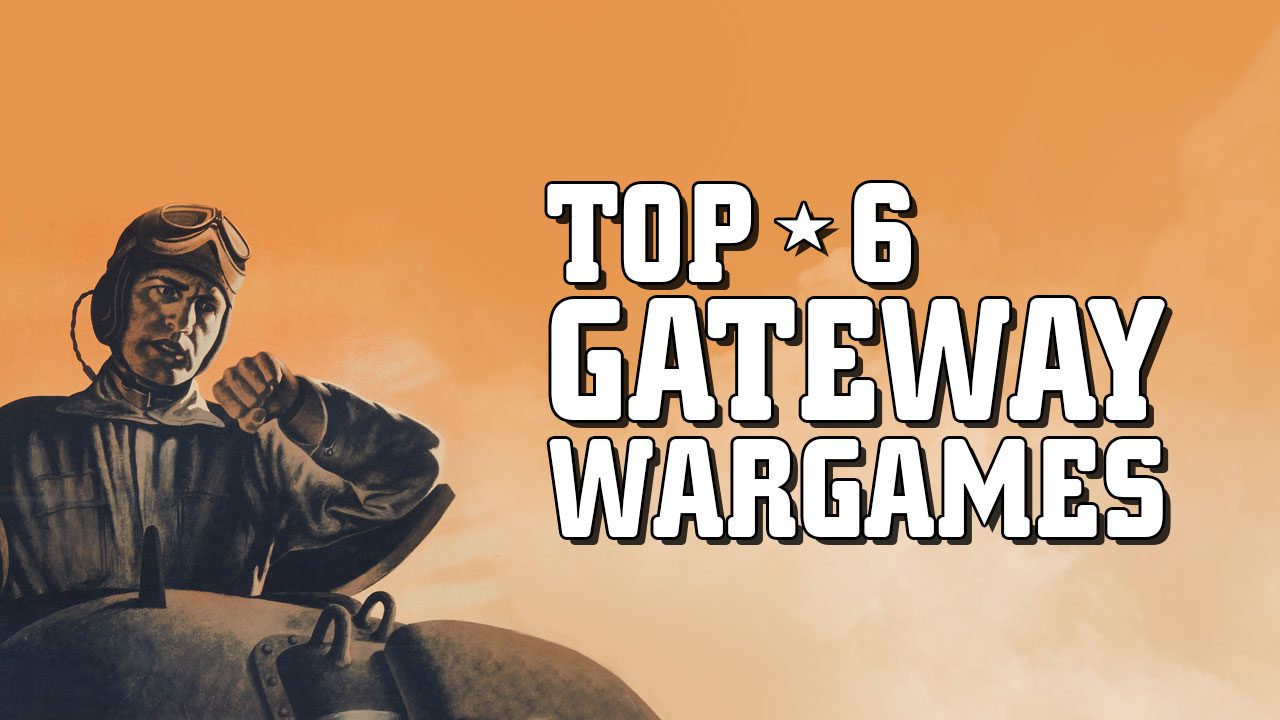All of the games below can be played from start to finish in a couple hours. I know personally I am less inclined to play a game that is a four plus hour time sink if I am unsure if I am even going to enjoy it. Most of these games are also card driven wargames and steer away from simulation. There is nothing inherently wrong with simulation, traditional hex and counter, or chit based games, but for people who may want more of a ‘gamey’ experience card-driven games tend to bring history, strategy and gaming together nicely.
I have provided a small list of key terms that are commonly used in wargames. If you’re just getting into wargaming, make sure to check our out board gamer’s guide to wargaming, and tips for the wargame newbie.
Hex – the simple hexagon, the shape used by wargamers to simulate the ability for units to move in any direction
Chit – a cardboard token which is usually representative of a combat unit. Chits have a symbol which represents the unit and usually some combination of a movement value, a morale value, a ranged attack value, and melee value.
Fog of War – simulates the uncertainty of engaging in combat with the enemy. Players do not know what the others possess and must make strategic moves to minimize this shortcoming.
Supply – a chain of supply is needed to make sure all troops have basic necessities and the ability to get more supplies to the front line. If the chain of supply (a solid area unoccupied by an enemy) is broken or an enemy enters it, they cut off the army from the supply.
Zone of Control – in a hex wargame the zone of control usually refers to the six tiles surrounding a chit. You cannot move through a zone of control without incurring some penalty (attack of opportunity or a complete stop of movement).
1. Memoir ‘44 – Days of Wonder Press

Memoir ’44 is a WWII hex wargame from Days of Wonder press. The game is an older one, released in 2004, but it is based on the well loved Commands and Colors series from Richard Borg. What is great about Memoir ’44 is that it introduces gamers to unit abstraction, hex movement, terrain types and the idea of playing to a historical narrative.
The game itself is bright and well laid out. Set up is not difficult and there are player aids which really helped me out when I was a newbie to wargames. The tactic and troop cards are well written and have key terms in bold to help beginners decipher what will be affected on the board. What makes the game more tactile than other ‘traditional’ chit (cardboard token) wargames are the miniatures. These are especially helpful to new wargamers because everyone can clearly differentiate between units.
There are plenty of scenarios to play in the base game. Each scenario shows the layout of the map for quick setup, tells each player what their objectives are, and then explains any special rules that may apply to the scenario. It is wonderful how much information is told clearly in one place.
Finally, the rulebook is a great resource for players. There are examples of play for most every rule. Terrain tiles are explained in detail. The movement of each unit is shown with examples as well. The set up is shown in step-by-step instructions with numbers and labels. Finally, in the back of the book there are variants of play. This game can be played with more than two players, on grand scales and there are variant rules for getting your children involved.
Should your heart have been captivated by the base game and you want more, there are free mini campaigns on the Days of Wonder website and expansions that you can buy as well.
2. Lincoln – Worthington Games

Lincoln is an American Civil War strategic level wargame from Worthington Publishing. This game is exclusively a two-player affair, is very affordable as wargames go, and because of its unique combat system players are guaranteed to get many plays from it. One player is the Union, the other the Confederates. The objective of the game is for the Confederates and Union to capture as many victory point locations as possible while keeping their defenses high.
This game is accessible to new players because of its card system. Each player has a starting deck and plays cards every turn to move units, strengthen units in combat, or defend. However, when some cards are played, specifically to build new units, they are ‘sacrificed’ and are out of the game. Lincoln illustrates the supply system of the Civil War well because the South grows slowly weaker while the North gets better cards in the second half.
This game is incredibly balanced and is great for new players because either side can win. Sometimes a lack of control can be very demoralizing for players who want to feel like they have agency over a situation. There is nothing wrong with simulation, however, new players may be discouraged by the idea that they are destined to win or lose. The game can also be won through means other than fighting, players can be more strategic by focusing on blockades or romancing the politicians of Europe to come and aid the Confederates.
Overall, the production of the game is wonderful, another bright and colourful board. The map is easily read, the unit tokens are easy to read as well. The cards are what makes the game go. They are also incredibly well done, easily readable and the art is just fun for the hardcore history buff.
3. Holdfast (pick Your Flavour) – Worthington Games

Holdfast is the first of the traditional hex wargames in this list. There is no mounted board, the map is standard geographical fare: blue for water, green for lower elevation, brown for high elevation, grey roads with cities and towns as different colours for differentiation. Beauty is found in simplicity because the map is easily readable and uncluttered. The map is not a huge and overwhelming affair and the scenario is something that can be accomplished in a few hours.
What makes this game stand out is the use of blocks for units. This game is heavily abstracted: your little blocks have numbers on them representing unit strength, when they take a hit the numbers go down until they are eliminated/ineffective. This game introduces new wargamers to the concept of fog of war. On the board your opponent does not know how many strength points a block has, as it only faces them. It makes the perfect opportunity for your friends to play some mind games with you while trying to strategically defend their victory points on the map. These block war games are great for your friends who like a good bluffing game.
The game also introduces players to the idea of supply. The blocks must have clear road access to a main city of their allegiance, or they will be out of supplies and the unit will start taking damage. It also introduces players to the idea of a zone of control; players cannot simply bypass an enemy unit without incurring a movement penalty of 3 spaces. Combat is fairly simple, the rulebook has a chart showing the strength of units and how many dice they will roll. The book also has nice charts which outline how terrain affects unit movement and combat modifiers. I do wish there were player aids, and the rulebook is not as self-explanatory as the previous examples have been, so I would recommend this as a game for one experienced player to teach to a less experienced player.
In our house Holdfast Korea is our flavour but the series also comes in many WWII flavours: Atlantic 1941-45, Pacific 1941-45, Tunisia, and Eastern Front. There is a little something for everyone here. Although it is a little more difficult than the others, this game is simple enough for new players to get it after a few turns (I should know. I was there not too long ago).
4. Manoeuvre – GMT Publishing

Manoeuvre from GMT games is another oldie but a goodie. This game already has a reputation amongst wargamers as being a gateway game, and one that is simple enough to play with their children. Set in the realm of Napoleonic Wars, there is a wide variety of countries to play as. Britain, France, Russia, Austria, Ottomans, Prussia, Spain and the United States are all available to play in the game and each country has a unique deck of cards with their own abilities. This is a chess-like tactics game with a modular board that can be set up any way for lots of replayability.
The strategy of the cards means that players will not be able to attack with every unit whenever they want. Manoeuvre is a game of reaction and adaptation that may appeal to new war gamers. There are also special action cards in each deck, different countries have different specialties so there are opportunities to move away from traditional line battles and have some fun with tactics. What is also great about this game (at least I think so) is that there are no scenarios. You can battle each other endlessly without expecting to simulate something specific. Great stories can be crafted in this way.
In true GMT production value there are player aid cards for each player that detail the terrain effects and phases of the game. The chits are extremely clear and only have one stat on them so players will know exactly what is going on. If you got the game new, some of your cards might stick together, it did happen to us. This game also works with terrain and strategic unit placement. The cards in the game are how units are activated and contain everything a new player would need: their melee attack, defense value, how far they can fire and any special rules with what dice they need to roll. If you want to play other armies GMT is also selling an expansion with four extra forces represented.
5. The Shores of Tripoli – Fort Circle Games

This is the newest game on the list for new wargamers and I could not gush about this more. It is one of my favourite wargames and I would play it anytime, you can read our review of The Shores of Tripoli. The game is simple as pie to teach. I will say that playing the Americans is the more difficult side to play so I would recommend the new wargame player to play the Tripolians. Each side has a unique deck of cards with great historical flavour. Each side also has unique victory conditions that need to be met. This game is great because of the number of turns and the card playing mechanics.
There are only six turns in the Shores of Tripoli so it feels like every play matters. New wargamers will get the Magic: the Gathering/Yu-Gi-Oh feeling of activating trap cards as each player tries to out sail each other in the Mediterranean Sea. Players will alternate putting down cards to perform actions with the Americans leading and the Tripolitians reacting. There are also three special cards that each faction gets that can only be used once per game, these are activated by accomplishing certain goals in the game or hitting the designated year.
The set up is extremely easy, the pieces are beautiful, and the rulebook is clear. Combat is not exceedingly difficult; everything hits on a 6 unless a card states it hits better. It is great fun moving little ships across the board and stealing money tokens from the Americans.
6. Battle for Moscow – Frank Chadwick

For all of the traditionalists out there, I have not forgotten you. Battle for Moscow by Frank Chadwick is the quintessential hex and chit wargame. It uses hexes, chits, and no cards. The chits have NATO symbols on them and combat is conducted through Combat Resolution Tables. This is a simulation game of the Battle for Moscow with a couple options of play: players can choose to play until the end of Operation Typhoon or continue to play after the fight was historically over.
What makes this game really accessible for new players is that there are only two stats on each token, an attack strength and a movement speed. The NATO symbology is not too overwhelming because there are only infantry units and tank units. The game is interesting as each turn can present a new challenge to both players as the environments change and winter approaches.
This is a simulation teaching game as players feel the effects of weather and must deal with morale. No one wants to lose the line because they made a poor choice. Players must deal with strict movement and try to minimize their losses, there is a lot of strategic thought and puzzling in this game that traditional wargames have. The battle charts are very nice in this game, you still have to roll for combat, so there are elements of chance. You can potentially change history through good strategy and some lucky dice rolls. The battle charts also let new players know exactly what they are getting into. Newbies can go into combat confident that they have made the correct decision.
Another selling point of this game is… that it is free! If you are afraid that your gaming partner won’t like it, this print and play game won’t have cost you a lot of money (besides Lincoln and Manoeuvre most of these games are an investment). You can download the game here or go to the BGG and download a more modern version of the assets.
More amazing games for beginners are: Undaunted: Normandy, Struggle for Europe, and Modern Land Battles. These were not included simply because I was trying to cover a larger breadth of wargame styles. I hope that this Top 6 List has been helpful for any wargamers who want to introduce their friends to the hobby and to anyone who has been looking to get into wargaming but didn’t know where to start. If you have any questions about these games please let us know in the comments below!











Good list. I think Russia is the best Holdfast game to pick up for a newbie, but it’s hard to go wrong with any of them, as you say. I like to play with the blocks open to everyone someone’s first play or two, and then when they are ready, switch to playing with the hidden info.
Bismarck and Midway are some good older ones, if one can find them – less flashy, but fun and simple to pick up and can play in 1-2 hours. Napoleon Returns is another good newer one. Hard to fit just 6 in the list though and I think they were all good selections. 🙂
Within the Command & Color series, I would rank Battle Cry as a better gateway item than Memoir. Battle Cry gives you all of the C&C core elements in a very easy to learn package. I see Memoir then being the step-up within the C&C eco-system.
+1 for Battle for Moscow and here is a free and nifty Web version for it: https://oberlabs.com/b4m/